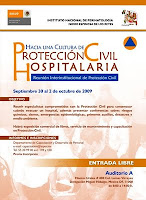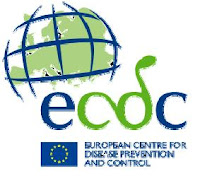Entradas
Mostrando las entradas de septiembre, 2009
| Lista de correo. Espere su aprobación. |
| Consultar este grupo |
Jugando con las palabras...
- Obtener vínculo
- X
- Correo electrónico
- Otras apps
Guía de Recomendaciones para instrumentar el plan de emergencia en los centros de trabajo por la epidemia de influenza. Sep, 2009
- Obtener vínculo
- X
- Correo electrónico
- Otras apps
Código Penal Federal
- Obtener vínculo
- X
- Correo electrónico
- Otras apps
Documentos Guia de Semarnat
- Obtener vínculo
- X
- Correo electrónico
- Otras apps
Riesgo de encefalopatía espongiforme bovina (priones) en enzimas de colagenasa
- Obtener vínculo
- X
- Correo electrónico
- Otras apps
GAO Recommends National Strategy for High-Risk Laboratories (USA Sep 21, 2009)
- Obtener vínculo
- X
- Correo electrónico
- Otras apps
Codigo de conducta para biocustodia.
- Obtener vínculo
- X
- Correo electrónico
- Otras apps
Manuales de utilidad para evaluar el entrenamiento en seguridad.
- Obtener vínculo
- X
- Correo electrónico
- Otras apps
Aplicación de sanciones y/o infracciones por la trasgresión a la normatividad en materia de salud animal.
- Obtener vínculo
- X
- Correo electrónico
- Otras apps
Protección Civil Hospitalaria (InPer) 30-Sep al 2 de Oct, 2009
- Obtener vínculo
- X
- Correo electrónico
- Otras apps
Manuales y guías de bioseguridad
- Obtener vínculo
- X
- Correo electrónico
- Otras apps
La buena salud es una herramienta invaluable
- Obtener vínculo
- X
- Correo electrónico
- Otras apps
Marco legislativo/regulatorio en bioseguridad y biocustodia de paises europeos
- Obtener vínculo
- X
- Correo electrónico
- Otras apps
Medidas de protección personal (no farmacológicas) para reducir el riesgo de contraer o transmitir la gripe humana
- Obtener vínculo
- X
- Correo electrónico
- Otras apps
The Disposal of Activated Carbon from Chemical Agent Disposal Facilities
- Obtener vínculo
- X
- Correo electrónico
- Otras apps
Respiratory Protection for Healthcare Workers in the Workplace Against Novel H1N1 Influenza A
- Obtener vínculo
- X
- Correo electrónico
- Otras apps







